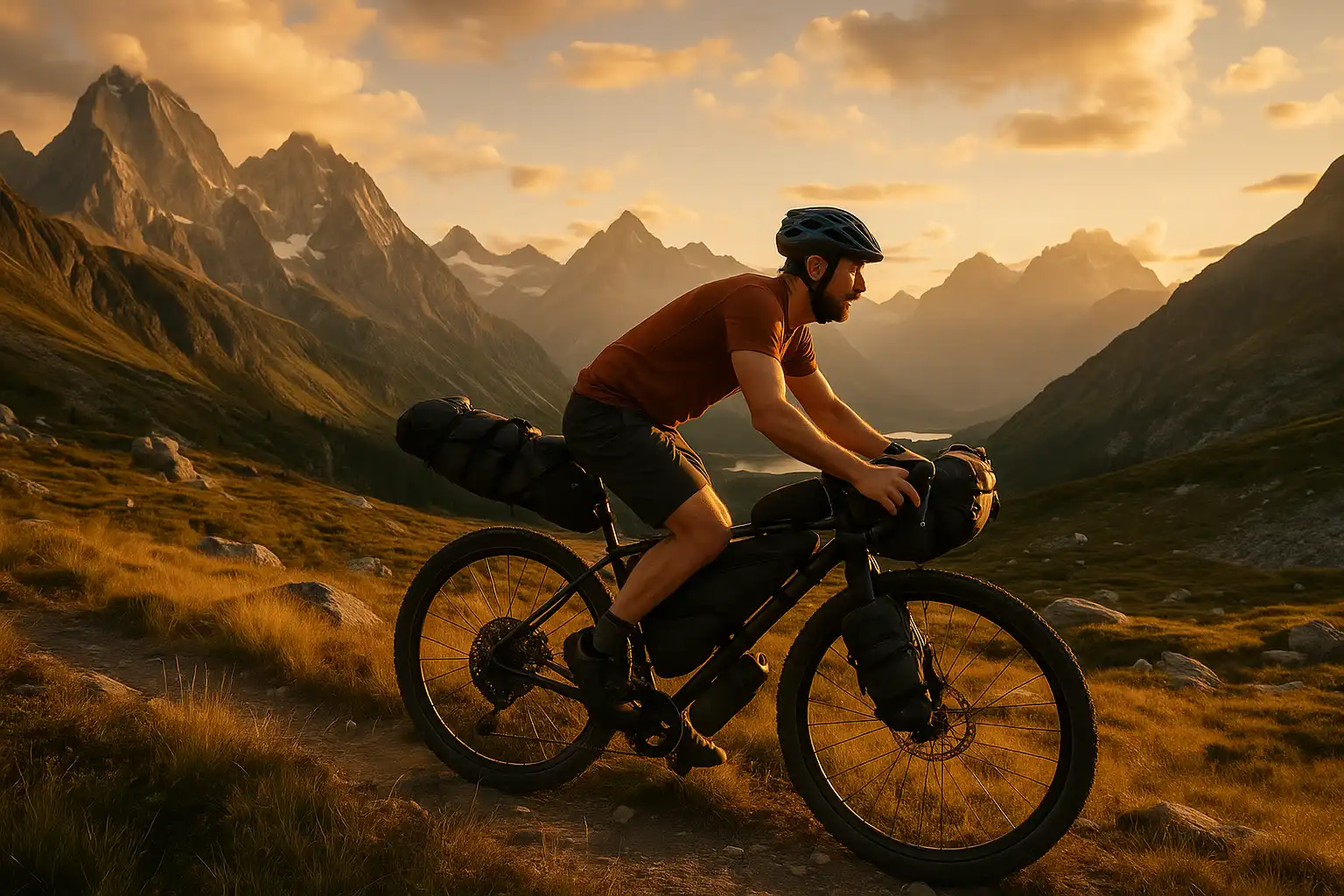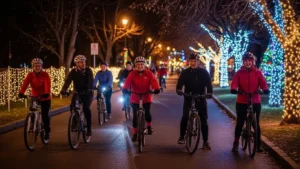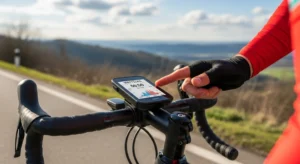Bikepacking has emerged as one of the most exciting and rapidly growing disciplines in cycling, combining the freedom of bicycle touring with the minimalist approach of backpacking. In 2025, this adventure cycling movement is experiencing unprecedented growth, attracting riders who seek to explore remote landscapes while carrying everything they need for multi-day journeys on their bikes.
The appeal of bikepacking lies in its perfect balance of adventure, self-sufficiency, and environmental consciousness. Unlike traditional bicycle touring, which often relies on panniers and established accommodations, bikepacking emphasizes lightweight gear, wild camping, and the ability to access terrain that would be impossible with conventional touring setups.
## The Evolution of Bikepacking: From Niche to Mainstream
Bikepacking has evolved dramatically from its humble beginnings as a fringe activity practiced by a small group of adventurous cyclists. Today, it represents a significant segment of the cycling market, with dedicated gear manufacturers, specialized bikes, and a thriving community of enthusiasts sharing routes, tips, and experiences.
The growth of bikepacking can be attributed to several factors, including improved gear technology, better access to route information, and a growing desire among cyclists to disconnect from urban environments and reconnect with nature. Social media has also played a crucial role in popularizing bikepacking, with stunning photography and inspiring stories attracting new participants to the discipline.
The COVID-19 pandemic significantly accelerated bikepacking’s growth, as people sought outdoor activities that allowed for social distancing while providing adventure and exercise. This surge in interest has continued into 2025, with bikepacking events and routes seeing record participation levels.
The democratization of route information through online platforms and GPS technology has made bikepacking more accessible to newcomers. Detailed route descriptions, elevation profiles, and gear recommendations are now readily available, reducing the barriers to entry for those interested in trying bikepacking for the first time.
## Bikepacking Gear Revolution: Lighter, Smarter, More Efficient
The gear used for bikepacking has undergone a remarkable transformation, with manufacturers developing products specifically designed for the unique demands of bike-based adventure travel. Modern bikepacking gear prioritizes weight savings, durability, and functionality, allowing riders to carry everything they need while maintaining the agility and performance of their bikes.
Bikepacking bags have become increasingly sophisticated, with designs that optimize aerodynamics, weight distribution, and accessibility. Frame bags, seat packs, handlebar bags, and top tube bags are now available in countless configurations, allowing riders to customize their setup based on their specific needs and bike geometry.
The materials used in bikepacking gear have also advanced significantly. Ultralight fabrics, waterproof zippers, and innovative attachment systems have made modern bikepacking bags more durable and weather-resistant while reducing weight. Many bags now feature modular designs that allow riders to adjust capacity based on trip length and requirements.
Shelter technology has been particularly important in bikepacking’s evolution. Ultralight tents, bivvy sacks, and tarp systems designed specifically for bikepacking offer excellent protection while packing down to incredibly small sizes. Many of these shelters can be set up quickly and in challenging terrain, making them ideal for the varied camping situations encountered during bikepacking adventures.
## The Rise of Bikepacking-Specific Bicycles
The growing popularity of bikepacking has led to the development of bikes designed specifically for this discipline. While early bikepackers often used modified mountain bikes or touring bikes, today’s bikepacking-specific bikes offer optimized geometry, component selection, and features that enhance the bikepacking experience.
Modern bikepacking bikes typically feature longer wheelbases for stability when loaded, multiple mounting points for bags and accessories, and geometry that balances efficiency with comfort over long distances. Many bikepacking bikes also incorporate features like internal cable routing to prevent interference with bags and frame materials that provide compliance for comfort on rough terrain.
The integration of modern drivetrain technology has been particularly beneficial for bikepacking bikes. Wide-range cassettes and single-chainring setups provide the gear range needed for varied terrain while reducing complexity and maintenance requirements. Electronic shifting systems, while not essential, offer precise shifting performance even when bikes are heavily loaded.
Tire clearance has become increasingly important in bikepacking bike design. The ability to run wide, low-pressure tires provides better traction, comfort, and puncture resistance on the varied terrain encountered during bikepacking adventures. Many bikepacking bikes can accommodate tires ranging from 2.1 inches to 2.6 inches or even wider.
The choice between different bike categories for bikepacking—mountain bikes, gravel bikes, or dedicated bikepacking bikes—depends largely on the intended terrain and riding style. Mountain bikes excel on technical terrain, gravel bikes offer efficiency on mixed surfaces, and dedicated bikepacking bikes provide the best balance of features for most bikepacking applications.
## Route Planning and Navigation: Technology Meets Adventure
Modern technology has revolutionized route planning and navigation for bikepacking, making it easier than ever to discover new routes and navigate safely in remote areas. GPS devices, smartphone apps, and online route-sharing platforms have transformed how bikepackers plan and execute their adventures.
GPS navigation systems designed specifically for cycling offer features like turn-by-turn directions, elevation profiles, and the ability to follow pre-loaded routes. Many devices also include safety features like incident detection and emergency communication capabilities, providing peace of mind for solo bikepackers or those traveling in remote areas.
Smartphone apps have become increasingly sophisticated, offering offline mapping capabilities, route recording, and social features that allow bikepackers to share their experiences and discover new routes. The ability to download maps for offline use is particularly important for bikepacking, as cellular coverage is often limited in remote areas.
Online route-sharing platforms have created a global community of bikepackers who share detailed route information, including GPS tracks, elevation profiles, water sources, and camping opportunities. These platforms have democratized access to route information and made it possible for bikepackers to explore areas they might never have discovered otherwise.
The integration of weather forecasting and real-time conditions into navigation systems has also improved safety and planning for bikepacking adventures. The ability to access current weather conditions and forecasts helps bikepackers make informed decisions about route timing and gear selection.
## The Psychology of Bikepacking: Why We Seek Adventure
The appeal of bikepacking extends far beyond the physical challenge and technical aspects of the activity. For many participants, bikepacking represents a form of active meditation, providing an opportunity to disconnect from the stresses of modern life and reconnect with nature and themselves.
The self-sufficient nature of bikepacking creates a unique sense of accomplishment and confidence. Carrying everything needed for survival and successfully completing a multi-day journey under one’s own power provides a profound sense of achievement that is difficult to replicate in other activities.
The slow pace of bicycle travel allows bikepackers to experience landscapes and communities in ways that are impossible when traveling by car or other motorized transportation. This intimate connection with the environment and local cultures is one of bikepacking’s most rewarding aspects.
The problem-solving aspects of bikepacking—from route finding to gear management to dealing with unexpected challenges—provide mental stimulation and personal growth opportunities. Many bikepackers report that the skills and confidence gained through bikepacking adventures translate to other areas of their lives.
The social aspects of bikepacking, whether traveling with companions or meeting other adventurers along the way, create lasting friendships and shared experiences. The bikepacking community is known for its welcoming and supportive nature, with experienced bikepackers often eager to share knowledge and assistance with newcomers.
## Environmental Considerations and Leave No Trace
As bikepacking has grown in popularity, environmental stewardship has become increasingly important. The Leave No Trace principles, originally developed for backpacking, have been adapted for bikepacking to help minimize the environmental impact of these adventures.
Proper waste management is crucial in bikepacking, as many routes pass through pristine wilderness areas where human impact should be minimized. This includes packing out all trash, properly disposing of human waste, and using biodegradable soaps when washing dishes or personal hygiene items.
Campsite selection and setup practices are also important environmental considerations. Bikepackers are encouraged to use established campsites when available and to camp on durable surfaces when wild camping is necessary. Proper food storage to prevent wildlife encounters is also essential in many bikepacking areas.
The choice of routes and timing can also impact environmental sustainability. Avoiding sensitive areas during wildlife breeding seasons, staying on designated trails, and respecting private property and local regulations help ensure that bikepacking opportunities remain available for future generations.
Many bikepacking organizations and communities actively promote environmental stewardship through education, trail maintenance, and advocacy efforts. These initiatives help protect the landscapes that make bikepacking possible while building positive relationships with land managers and local communities.
## Bikepacking Safety: Preparation and Risk Management
Safety considerations are paramount in bikepacking, as adventures often take place in remote areas where help may be hours or days away. Proper preparation, risk assessment, and emergency planning are essential components of successful and safe bikepacking adventures.
Communication devices have become increasingly important for bikepacking safety. Satellite communicators allow bikepackers to send messages and request emergency assistance even in areas without cellular coverage. Many devices also include GPS tracking features that allow friends and family to monitor progress and location.
First aid knowledge and equipment are crucial for bikepacking, as medical assistance may not be readily available in remote areas. Many bikepackers take wilderness first aid courses to develop the skills needed to handle medical emergencies in backcountry settings.
Mechanical skills and tools are also important safety considerations. The ability to perform basic bike repairs and maintenance can prevent minor mechanical issues from becoming major problems. Carrying appropriate tools and spare parts for the specific bike and components being used is essential.
Weather awareness and preparation are critical for bikepacking safety. Understanding local weather patterns, carrying appropriate clothing and shelter, and having contingency plans for severe weather can prevent dangerous situations from developing.
Route planning should include identification of bail-out points, water sources, and potential resupply opportunities. Having multiple exit strategies and backup plans helps ensure that bikepackers can respond appropriately to changing conditions or unexpected challenges.
## The Economics of Bikepacking: Adventure on Any Budget
One of bikepacking’s most appealing aspects is its accessibility across different economic levels. While high-end gear can be expensive, it’s possible to get started in bikepacking with relatively modest investments, especially for those who already own a suitable bike.
The initial gear investment for bikepacking can vary widely depending on the quality and features desired. Budget-conscious bikepackers can often find used gear or choose less expensive alternatives that still provide adequate performance for getting started in the discipline.
The ongoing costs of bikepacking are generally quite low compared to other forms of adventure travel. Once the initial gear investment is made, the primary expenses are food, occasional resupply, and transportation to and from trailheads. This makes bikepacking an attractive option for those seeking adventure travel on a budget.
Many bikepackers find that the skills and gear acquired for bikepacking enhance other outdoor activities, providing additional value for their investments. Ultralight camping gear, navigation skills, and outdoor cooking equipment are useful for hiking, backpacking, and other outdoor pursuits.
The durability of quality bikepacking gear means that initial investments often last for many years of adventures. Many bikepackers report using the same core gear items for hundreds of nights in the field, making the cost per use quite reasonable.
## Bikepacking Communities and Culture
The bikepacking community has developed a unique culture characterized by inclusivity, knowledge sharing, and mutual support. This culture has been instrumental in the discipline’s growth and continues to attract new participants from diverse backgrounds.
Online communities and forums provide platforms for bikepackers to share experiences, ask questions, and plan adventures together. These communities often organize group rides, skills workshops, and social events that help build connections among participants.
Local bikepacking groups and clubs have formed in many areas, providing opportunities for newcomers to learn from experienced bikepackers and participate in group adventures. These organizations often maintain local route information and advocate for bikepacking access and trail development.
The bikepacking industry has also fostered a culture of innovation and collaboration, with gear manufacturers, route developers, and content creators working together to advance the discipline and share knowledge with the broader community.
Events and festivals dedicated to bikepacking have become increasingly popular, providing opportunities for community members to gather, share experiences, and learn about new gear and techniques. These events often feature presentations, workshops, and group rides that help build skills and connections.
## The Future of Bikepacking
Looking ahead, bikepacking appears poised for continued growth and evolution. Advances in gear technology, improved access to route information, and growing environmental consciousness are likely to drive further expansion of the discipline.
Gear technology will continue to advance, with lighter, more durable, and more functional equipment becoming available. Innovations in materials science, manufacturing techniques, and design will likely result in gear that makes bikepacking more accessible and enjoyable for a broader range of participants.
Route development and infrastructure improvements will likely expand bikepacking opportunities in new areas. Trail organizations, land managers, and local communities are increasingly recognizing the economic and recreational benefits of bikepacking, leading to improved access and facilities.
The integration of technology will continue to enhance the bikepacking experience while maintaining the discipline’s connection to nature and self-sufficiency. Improved navigation systems, communication devices, and safety equipment will make bikepacking safer and more accessible without compromising its adventurous spirit.
Sustainability and environmental stewardship will likely become even more important as bikepacking grows in popularity. The community’s commitment to Leave No Trace principles and environmental protection will be crucial for maintaining access to the landscapes that make bikepacking possible.
## Getting Started: Your First Bikepacking Adventure
For those interested in trying bikepacking, the key is to start with shorter, less challenging adventures and gradually build skills and confidence. Many successful bikepackers began with overnight trips close to home before progressing to longer and more remote adventures.
Gear selection for first-time bikepackers should prioritize functionality and reliability over weight savings and advanced features. Starting with proven, durable gear helps ensure a positive first experience and builds confidence for future adventures.
Route selection is crucial for first-time bikepackers. Choosing routes with good access, reliable water sources, and established camping opportunities helps reduce variables and potential challenges. Many areas offer beginner-friendly bikepacking routes specifically designed for those new to the discipline.
Skill development should be an ongoing process for bikepackers. Taking courses in wilderness first aid, bike maintenance, and outdoor skills can significantly enhance safety and enjoyment. Many outdoor organizations and bike shops offer workshops and classes specifically for bikepackers.
## Conclusion: Embracing the Bikepacking Adventure
Bikepacking represents one of cycling’s most exciting and rewarding disciplines, offering opportunities for adventure, personal growth, and connection with nature that are difficult to find in other activities. As the discipline continues to grow and evolve in 2025, it’s attracting participants from all backgrounds who share a common desire for adventure and self-sufficiency.
The combination of improved gear technology, better access to information, and a supportive community has made bikepacking more accessible than ever before. Whether you’re seeking a weekend escape from urban life or planning an epic multi-week adventure, bikepacking offers opportunities for experiences that will create lasting memories and personal growth.
The future of bikepacking looks bright, with continued innovation in gear and technology, expanding route opportunities, and a growing community of enthusiasts committed to environmental stewardship and inclusive participation. For those ready to embrace the adventure, there has never been a better time to discover the joys of bikepacking.




